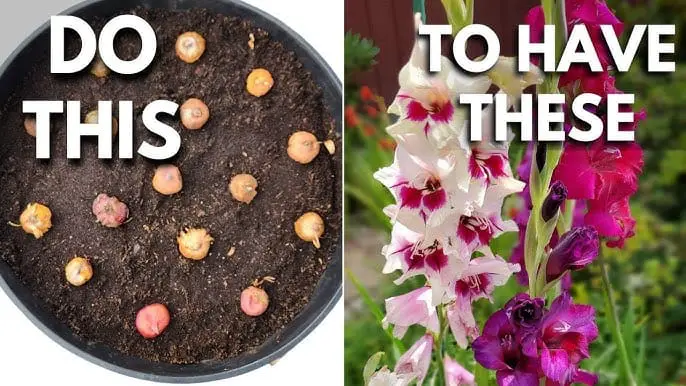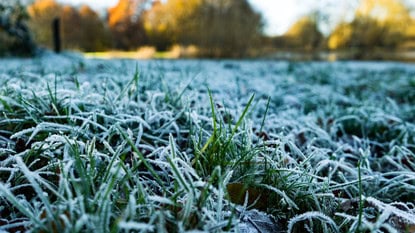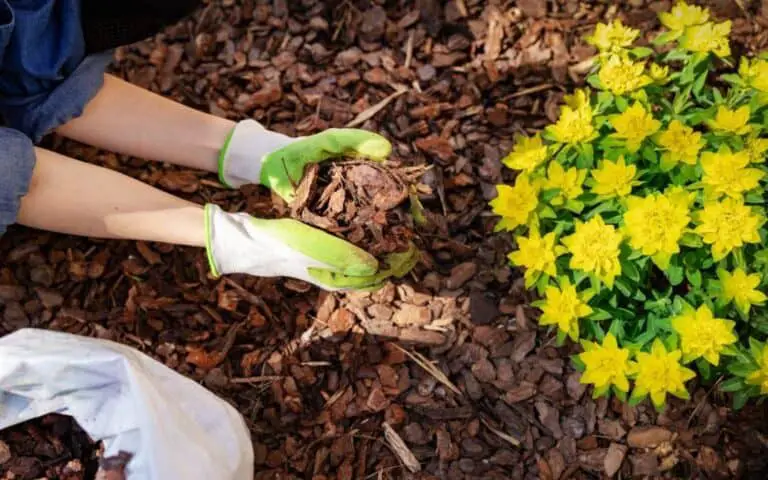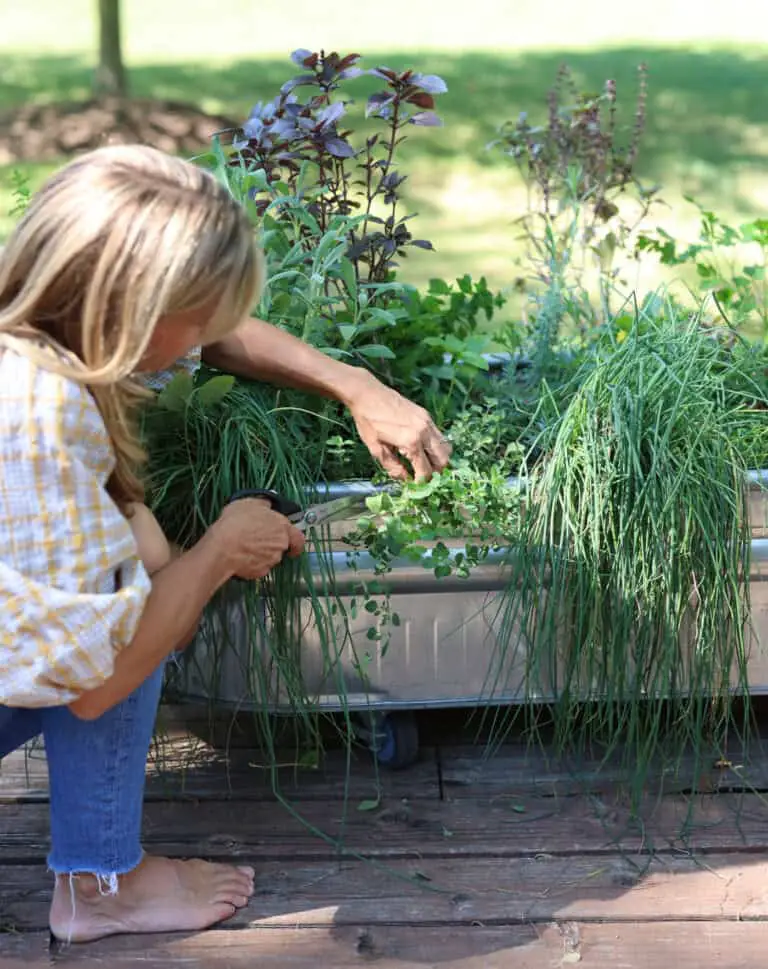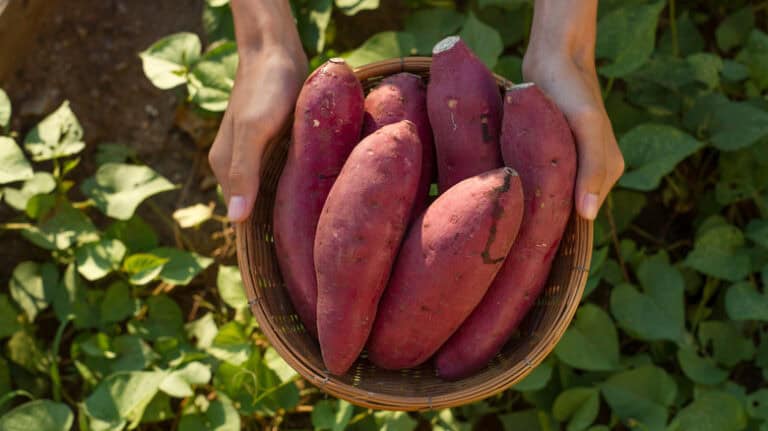How To Plant And Grow Gladiolus Bulbs In Containers: Expert Tips
To plant gladiolus bulbs in containers, choose a well-draining pot and plant bulbs 4 inches deep. Water thoroughly and place in sunlight.
Gladiolus flowers add vibrant color to any garden or patio. Growing them in containers allows for flexibility and easy management. These striking blooms thrive in well-draining soil and require plenty of sunlight. Choose a pot with good drainage and fill it with a mix of garden soil and compost.
Plant the bulbs about 4 inches deep and space them 3 to 6 inches apart. Water them well immediately after planting and keep the soil consistently moist. With proper care, your gladiolus will reward you with beautiful, tall spikes of flowers that can brighten any space.
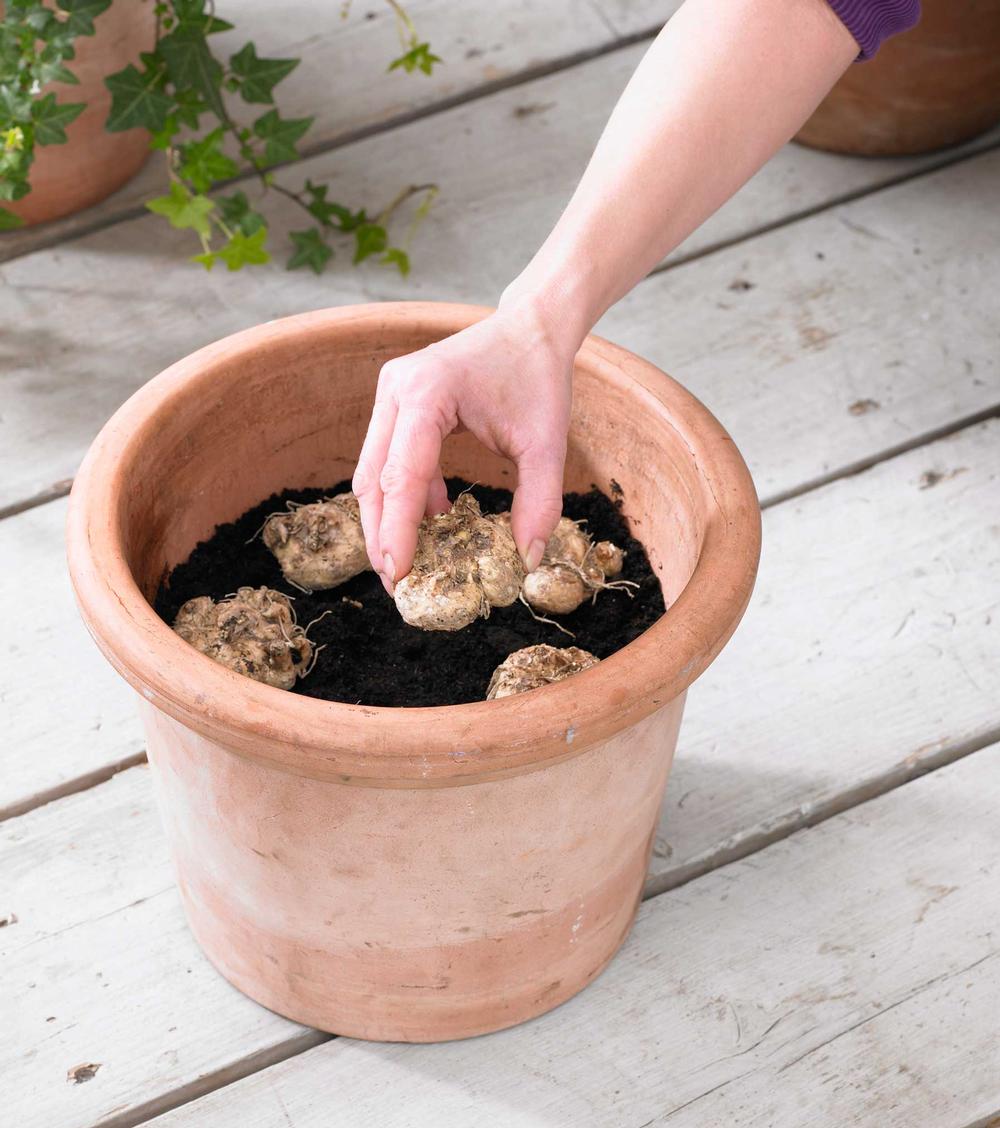
Credit: www.longfield-gardens.com
Choosing The Right Container
Picking the right container for your gladiolus bulbs is crucial. It impacts growth and health. Ensure you make the best choice by focusing on size, material, and drainage.
Size And Material
The size of the container matters. Gladiolus bulbs need space to grow. Use a container at least 12 inches deep. This depth allows roots to spread freely.
For materials, choose between plastic, ceramic, or terracotta. Each has its benefits:
- Plastic: Lightweight and affordable. Easy to move around.
- Ceramic: Adds a decorative touch. Heavier, providing stability.
- Terracotta: Porous, allows air circulation. Helps prevent root rot.
Drainage Requirements
Proper drainage is essential for gladiolus bulbs. Containers must have drainage holes. These prevent water from pooling, which can cause bulb rot.
You can add a layer of gravel at the bottom. This improves drainage. Cover the holes with mesh to stop soil from washing out.
| Container Material | Benefits |
|---|---|
| Plastic | Lightweight, affordable |
| Ceramic | Decorative, stable |
| Terracotta | Porous, prevents root rot |
Selecting Gladiolus Bulbs
Choosing the right gladiolus bulbs is crucial for a beautiful container garden. The right selection ensures healthy growth and vibrant blooms.
Quality Indicators
High-quality bulbs are essential. Look for these indicators:
- Firmness: Bulbs should be firm to the touch.
- No Mold: Avoid bulbs with any signs of mold.
- Size: Larger bulbs often produce stronger plants.
- Color: Healthy bulbs have a consistent color.
- Shape: Bulbs should be round or slightly oval.
Variety Options
Gladiolus comes in various types. Here are some popular options:
| Variety | Bloom Color | Height |
|---|---|---|
| Traderhorn | Red | 4-5 feet |
| White Prosperity | White | 3-4 feet |
| Blue Moon | Blue | 2-3 feet |
| Pink Lady | Pink | 3-4 feet |
Each variety offers unique beauty. Choose based on your preference and container size.
Preparing The Soil
Getting the soil right is crucial for growing healthy gladiolus bulbs in containers. Proper soil preparation ensures your plants thrive and produce beautiful blooms. Let’s dive into the key steps for preparing the soil.
Soil Mix Recommendations
Using the right soil mix is essential for your gladiolus bulbs. Here’s a great mix:
- Potting soil: 60%
- Perlite: 20%
- Compost: 20%
This mix provides good drainage and nutrients. It also helps with aeration, which is important for bulb health.
Fertilization Tips
Fertilizing your gladiolus bulbs will help them grow strong. Follow these tips:
- Before planting: Add a balanced fertilizer (10-10-10) to the soil.
- After sprouting: Use a liquid fertilizer every two weeks.
- During blooming: Switch to a high-phosphorus fertilizer (5-10-5).
Consistent fertilization ensures your gladiolus bulbs get the nutrients they need.
| Fertilizer Type | When to Use | Ratio |
|---|---|---|
| Balanced Fertilizer | Before planting | 10-10-10 |
| Liquid Fertilizer | After sprouting | Every 2 weeks |
| High-Phosphorus Fertilizer | During blooming | 5-10-5 |
With these tips, your gladiolus bulbs will thrive in their containers.
Planting The Bulbs
Starting gladiolus bulbs in containers is a delightful experience. It ensures stunning blooms throughout the season. Follow these simple steps to guarantee healthy growth.
Depth And Spacing
Proper depth and spacing are crucial for gladiolus bulbs. Plant each bulb 4-6 inches deep. This depth helps the bulb establish strong roots.
Spacing is equally important. Place each bulb 3-6 inches apart. This provides enough room for growth and prevents overcrowding.
Ensure the container is at least 12 inches deep. Deep containers support root growth and stability.
Proper Orientation
Ensure the correct orientation of each bulb. The pointed end should face up. This end is where the shoot will emerge.
Place the flat end down in the soil. This end contains the roots.
Cover the bulbs gently with soil. Water the container thoroughly after planting.
Watering helps settle the soil around the bulbs. It also initiates the growth process.
Place the container in a sunny location. Gladiolus bulbs thrive in full sun.
Watering Guidelines
Proper watering is crucial for growing healthy gladiolus bulbs in containers. These beautiful flowers need the right amount of water to thrive. Follow these guidelines to ensure your gladiolus plants flourish.
Initial Watering
Right after planting your gladiolus bulbs, give them a good soak. Water the soil until it is moist but not soggy. This helps the bulbs settle into their new home and encourages root growth. Use a watering can with a gentle spout to avoid disturbing the soil.
Ongoing Care
Once your gladiolus bulbs are established, keep the soil consistently moist. Check the soil moisture by inserting your finger about an inch deep. If it feels dry, it’s time to water.
Water your containers early in the morning. This allows the plants to absorb moisture before the heat of the day. Avoid watering the foliage to prevent fungal diseases.
During hot and dry periods, you might need to water more frequently. Always monitor the soil moisture to keep your plants healthy.
| Watering Frequency | Condition |
|---|---|
| Every 2-3 days | Normal weather |
| Daily | Hot and dry weather |
Using a mulch can help retain soil moisture. Apply a layer of organic mulch around the plants, but keep it away from the stems.
Proper drainage is essential. Ensure your containers have drainage holes to prevent waterlogging. Waterlogged soil can lead to root rot and other issues.
By following these watering guidelines, your gladiolus bulbs will grow strong and vibrant. Happy planting!
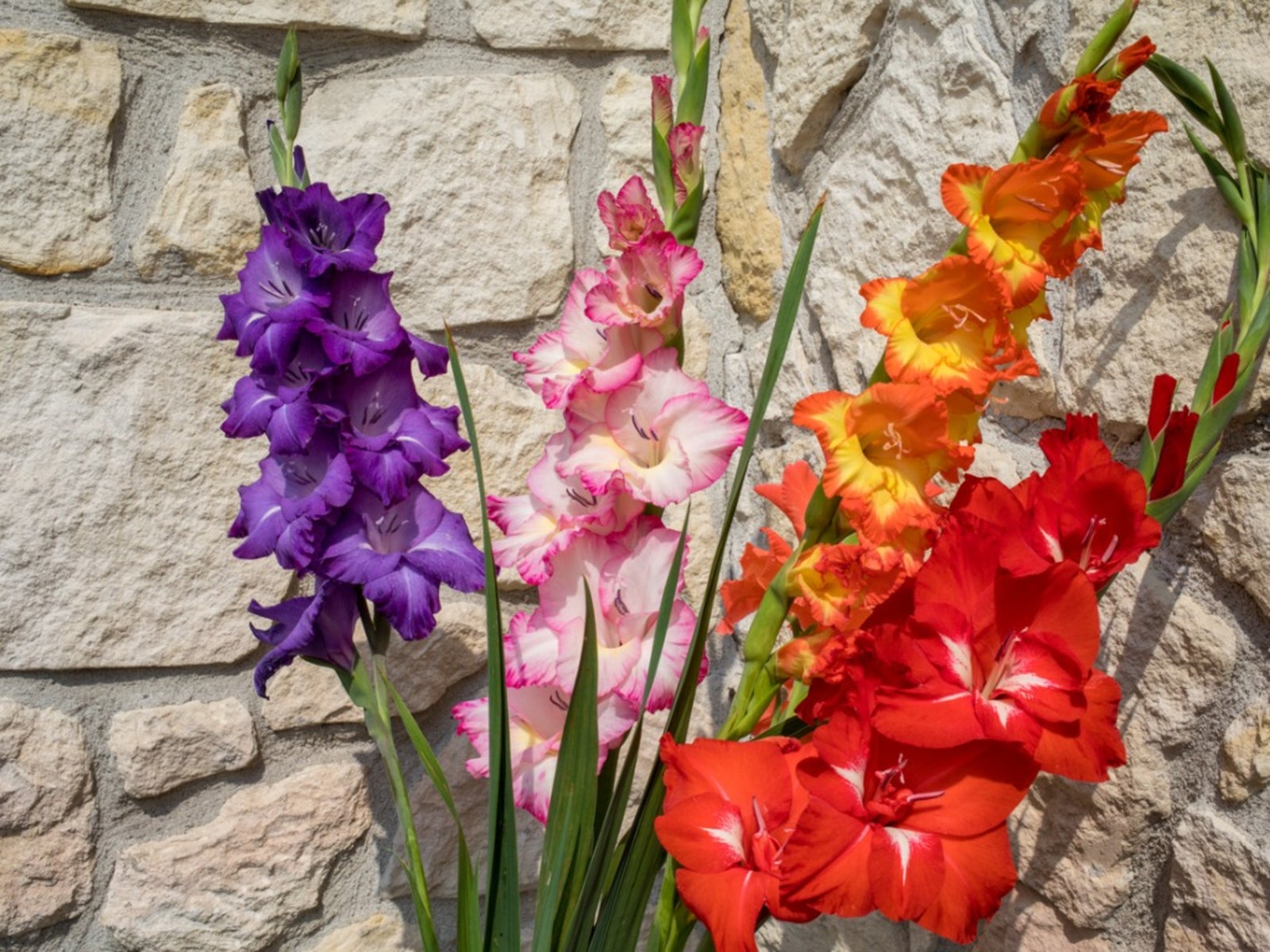
Credit: www.gardeningknowhow.com
Sunlight And Temperature
Understanding the right sunlight and temperature conditions is crucial for growing healthy gladiolus bulbs in containers. These factors directly impact their growth and bloom quality.
Optimal Sunlight
Gladiolus bulbs need full sunlight to thrive. Ensure they receive at least 6-8 hours of direct sunlight each day. Place the containers in a sunny spot, such as a south-facing balcony or garden area.
Insufficient light can cause weak growth. The plants might not bloom well. If natural sunlight is limited, consider using grow lights. These can provide the necessary light intensity for your gladiolus bulbs.
Temperature Considerations
Gladiolus bulbs prefer warm temperatures. The ideal range is between 60-75°F (15-24°C). Ensure the temperature does not drop below 50°F (10°C) at night. Cold temperatures can hinder growth.
During the early growing season, protect the bulbs from frost. You can use frost covers if needed. In extremely hot climates, provide some shade during peak afternoon hours. This prevents the bulbs from overheating.
| Condition | Optimal Range |
|---|---|
| Sunlight | 6-8 hours of direct sunlight |
| Daytime Temperature | 60-75°F (15-24°C) |
| Night Temperature | Above 50°F (10°C) |
By maintaining the right sunlight and temperature, your gladiolus bulbs will grow strong and bloom beautifully. These conditions are key for successful container gardening.
Pest And Disease Management
Gladiolus bulbs are stunning and vibrant flowers. They can face challenges from pests and diseases. Proper management ensures healthy growth and beautiful blooms. Below are some key steps to manage pests and prevent diseases in gladiolus bulbs grown in containers.
Common Pests
Several pests can attack gladiolus bulbs. These pests can damage the plant and reduce its beauty. Here are a few common pests:
- Aphids: Small insects that suck the sap from plants.
- Thrips: Tiny, slender insects that feed on flowers and leaves.
- Spider Mites: Microscopic pests that cause yellow spots on leaves.
- Bulb Mites: Insects that attack the bulbs and roots.
To control these pests, use insecticidal soap or neem oil. Also, regularly inspect plants for signs of infestation. Remove any affected parts immediately.
Disease Prevention
Diseases can also affect gladiolus bulbs. Proper care and prevention can keep plants healthy. Here are some common diseases and prevention tips:
| Disease | Symptoms | Prevention |
|---|---|---|
| Botrytis Blight | Brown spots on flowers and leaves | Ensure good air circulation and avoid overhead watering |
| Fusarium Wilt | Yellowing leaves and rotting bulbs | Plant in well-draining soil and rotate crops |
| Root Rot | Soft, mushy roots and stunted growth | Do not overwater and use sterile soil |
Also, keep the container clean and free from debris. Dispose of any diseased plants properly. Sterilize tools and containers to prevent the spread of diseases.
Supporting Growth
Growing gladiolus bulbs in containers is rewarding. Supporting their growth is key. Proper support ensures healthy and beautiful blooms. Below are crucial methods to aid growth:
Staking Methods
Gladiolus plants can become tall and heavy. Without support, they may droop or break. Staking is important to keep them upright.
- Use wooden stakes or bamboo sticks.
- Place stakes in the soil near the bulbs.
- Ensure the stakes are firmly in the soil.
- As the plants grow, gently tie them to the stakes.
- Use soft ties to avoid damaging the stems.
Pruning Techniques
Pruning helps gladiolus plants to stay healthy. It ensures better blooms and prevents diseases.
- Remove any dead or yellowing leaves.
- Cut off spent flowers to encourage new blooms.
- Use clean, sharp scissors or pruning shears.
- Trim back any damaged stems.
Regular pruning keeps your gladiolus plants thriving. With these methods, your gladiolus bulbs will grow strong and beautiful.
Harvesting And Storing
Once your gladiolus bulbs have bloomed, it’s time to think about harvesting and storing them for the next season. Proper harvesting and storage ensure healthy bulbs and beautiful blooms next year.
When To Harvest
It’s essential to know the right time for harvesting your gladiolus bulbs. Wait until the foliage turns yellow and starts to die back. This usually happens 6-8 weeks after blooming.
Use a garden fork to gently lift the bulbs out of the soil. Be careful not to damage them. Shake off any excess soil and trim the foliage back to about 1-2 inches above the bulb.
Storage Tips
Proper storage of gladiolus bulbs ensures they remain healthy and ready for next planting season. Follow these tips for effective storage:
- Clean the Bulbs: Remove any remaining soil. Let them dry for a few days.
- Inspect for Diseases: Check for any signs of rot or disease. Discard any unhealthy bulbs.
- Cure the Bulbs: Allow them to cure in a warm, dry place for 1-2 weeks.
- Store in a Cool Place: Place the bulbs in a mesh bag or a cardboard box with ventilation. Store in a cool, dark place with temperatures between 35-45°F (2-7°C).
- Check Periodically: Inspect the bulbs periodically during winter for any signs of rot or mold.
Following these steps will help ensure your gladiolus bulbs stay healthy and are ready to plant next season.

Credit: www.youtube.com
Frequently Asked Questions
How Do I Start Gladiolus Bulbs In Containers?
Begin by choosing a large, well-draining container. Plant the bulbs 4 inches deep, spacing them 2-4 inches apart.
What Type Of Soil Is Best For Gladiolus?
Use well-draining, fertile soil. A mix of potting soil and compost works well, ensuring proper nutrients for growth.
How Often Should I Water Gladiolus Bulbs?
Water the bulbs thoroughly after planting. Maintain consistent moisture, watering when the top inch of soil feels dry.
Conclusion
Planting and growing gladiolus bulbs in containers is simple and rewarding. Follow the steps for vibrant blooms. Remember to water regularly and provide sufficient sunlight. Enjoy the beauty and elegance these flowers bring to your space. Happy gardening, and may your gladiolus thrive!

